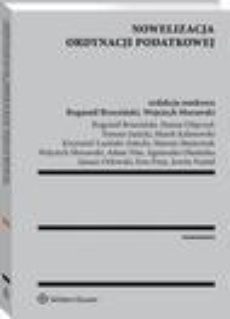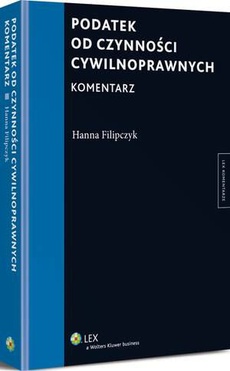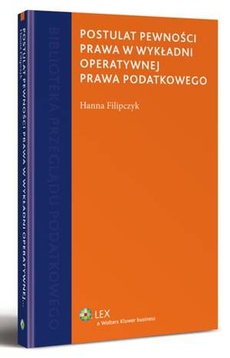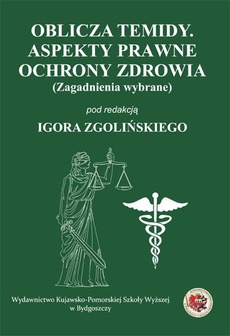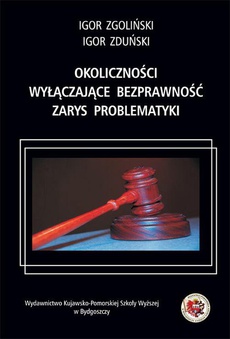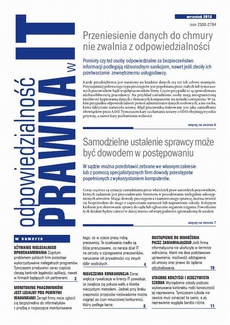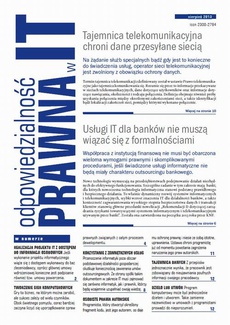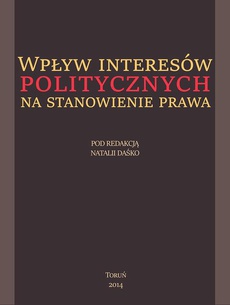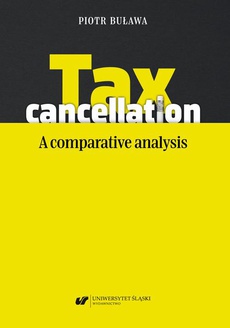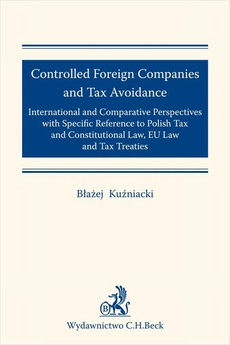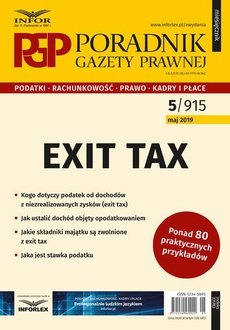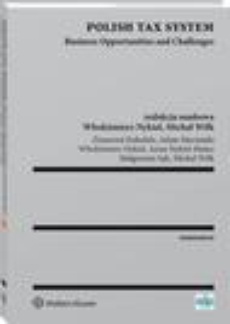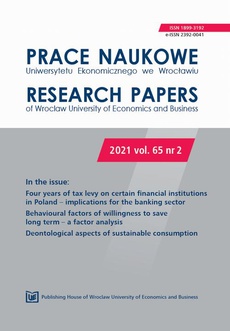INNE EBOOKI AUTORA
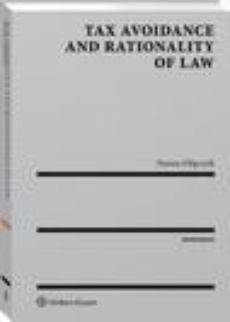
-25%
Tax avoidance and rationality of law
Autor:
Wydawca:
Format:
"Fiscal" and "moral termites" (in the words of Vito Tanzi and John Braithwaite) are eating away taxes due, not only by tax evasion but also by a more sophisticated conduct: tax avoidance. Tax Avoidance and Rationality of Law is a theoretical journey undertook to understand this phenomenon.
It is a bold and inspiring study of tax avoidance, leading through the questions of what tax avoidance essentially is, and why and how (by means of what legal instruments) it should be countered. The central insight of the publication is that tax avoidance defeats rationality of law - violates law-as-rationalised - and that this is the exact reason why it is wrong and it should be combated.
The book contributes to a lively contemporary debate on legal and ethical aspects of tax avoidance. By explaining its nature and re-examining well-known objections against antiavoidance measures, the publication legitimises current initiatives such as the OECD/G20 Base Erosion and Profit Shifting (BEPS) project or national general anti-avoidance rules (GAARs). It also postulates the enrichment of the typical toolbox employed to prevent and counteract this phenomenon with principle-based legislation and co-operative compliance programmes.
The book is aimed at attracting a wide readership, including tax academics and tax judges.
| Rok wydania | 2017 |
|---|---|
| Liczba stron | 396 |
| Kategoria | Inne |
| Wydawca | Wolters Kluwer Polska SA |
| ISBN-13 | 978-83-8124-152-6 |
| Język publikacji | polski |
| Informacja o sprzedawcy | ePWN sp. z o.o. |
POLECAMY
Ciekawe propozycje
Spis treści
| Abbreviations and Acronyms | str. | 11 |
| Foreword | str. | 13 |
| Chapter I | |
| Introduction | str. | 15 |
| 1. Purpose of the study | str. | 15 |
| 2. State of the art | str. | 17 |
| 3. Lawmaking and interpretation | str. | 19 |
| 4. Methodology of the study | str. | 22 |
| 5. Structure of the study | str. | 24 |
| Chapter II | |
| Tax avoidance - the concept | str. | 27 |
| 1. Introductory remarks | str. | 27 |
| 2. In search of a definition | str. | 29 |
| 2.1. Three criteria of tax avoidance | str. | 29 |
| 2.2. Defeating the purpose of the law | str. | 30 |
| 2.3. Artificiality | str. | 33 |
| 2.4. Tax minimisation motive | str. | 44 |
| 3. Distinctions | str. | 52 |
| 3.1. Tax avoidance - tax evasion - tax planning | str. | 52 |
| 3.2. Tax avoidance - sham transactions | str. | 58 |
| 3.3. Tax avoidance - aggressive tax planning - base erosion and profit shifting | str. | 61 |
| 4. Conclusions | str. | 65 |
| Chapter III | |
| Justification for countering tax avoidance | str. | 67 |
| 1. Introductory remarks | str. | 67 |
| 2. Rule of law and anti-avoidance rules | str. | 68 |
| 2.1. Rule of law | str. | 68 |
| 2.2. Legitimacy (legality) | str. | 73 |
| 2.3. Certainty | str. | 74 |
| 2.4. Formal equality | str. | 80 |
| 3. The puzzle of tax avoidance | str. | 83 |
| 3.1. The illegal and the immoral | str. | 83 |
| 3.2. "Fair share" | str. | 85 |
| 3.3. Consequences of tax avoidance | str. | 90 |
| 3.4. Corporate social responsibility | str. | 92 |
| 3.5. Right to tax minimisation | str. | 97 |
| 4. Conclusions | str. | 103 |
| Chapter IV | |
| Rationality of law | str. | 105 |
| 1. Introductory remarks | str. | 105 |
| 2. Law and interpretation | str. | 108 |
| 2.1. Communicative nature of law | str. | 108 |
| 2.2. Interpretation as attribution of meaning | str. | 109 |
| 2.3. Interpretation as optimisation within constraints | str. | 114 |
| 2.4. Interpretation as attribution of communication intentions | str. | 123 |
| 3. Rationality of law as intelligibility | str. | 131 |
| 3.1. Intelligibility and its three aspects | str. | 131 |
| 3.2. Communicativeness | str. | 133 |
| 3.3. Reasonability (justifiability) | str. | 148 |
| 3.4. Coherence | str. | 154 |
| 4. Conclusions | str. | 165 |
| Chapter V | |
| Tax avoidance and rationality of law | str. | 167 |
| 1. Introductory remarks | str. | 167 |
| 2. Tax avoidance as defeating rationality of law | str. | 168 |
| 2.1. Communicativeness | str. | 168 |
| 2.2. Reasonability (justifiability) | str. | 175 |
| 2.3. Coherence | str. | 180 |
| 3. Why rationality? | str. | 183 |
| 4. Certainty, equality and dignity | str. | 192 |
| 5. Conclusions | str. | 202 |
| Chapter VI | |
| Rationality of income tax law | str. | 205 |
| 1. Introductory remarks | str. | 205 |
| 2. What to tax? Concept of income | str. | 207 |
| 2.1. Origins | str. | 207 |
| 2.2. From economic phenomenon to legal construct | str. | 209 |
| 2.3. Ectopia of income taxation (Prebble) | str. | 218 |
| 3. Where to tax? Allocation of taxing rights | str. | 225 |
| 3.1. Paradigm | str. | 225 |
| 3.2. Crisis | str. | 229 |
| 3.3. Solutions | str. | 239 |
| 4. How to tax? Formalism | str. | 250 |
| 4.1. State of complexity | str. | 250 |
| 4.2. Reasons | str. | 254 |
| 5. Conclusions | str. | 264 |
| Chapter VII | |
| Countering tax avoidance | str. | 267 |
| 1. Introductory remarks | str. | 267 |
| 2. Principle-based legislation | str. | 268 |
| 2.1. What PBL is (empirically) | str. | 268 |
| 2.2. What PBL should be (theoretically) | str. | 270 |
| 2.3. Rationality of law | str. | 280 |
| 2.4. Objections | str. | 283 |
| 3. General anti-avoidance rules | str. | 291 |
| 3.1. What a GAAR is (empirically) | str. | 291 |
| 3.2. What a GAAR should be (theoretically) | str. | 295 |
| 3.3. Rationality of law | str. | 304 |
| 3.4. Objections | str. | 306 |
| 4. Programmes of co-operative compliance (CC) | str. | 316 |
| 4.1. What CC is (empirically) | str. | 316 |
| 4.2. What CC should be (theoretically) | str. | 322 |
| 4.3. Rationality of law | str. | 328 |
| 4.4. Objections | str. | 330 |
| 5. Conclusions | str. | 335 |
| Chapter VIII | |
| "Power and trust" | str. | 337 |
| 1. Introductory remarks | str. | 337 |
| 2. Contemporary models of tax compliance | str. | 338 |
| 2.1. Model of economic rationality and new reflection | str. | 338 |
| 2.2. "Responsive regulation" | str. | 341 |
| 2.3. "Power" and "trust" - "slippery slope" framework | str. | 344 |
| 2.4. Procedural justice | str. | 348 |
| 3. Relevance for tax avoidance | str. | 350 |
| 3.1. Shades of non-compliance | str. | 350 |
| 3.2. Applicability to tax avoidance | str. | 353 |
| 3.3. Coercive and non-coercive measures | str. | 356 |
| 3.4. Effectiveness and fairness of tax law | str. | 357 |
| 4. Conclusions | str. | 360 |
| Summary and conclusions | str. | 361 |
| Legal acts and proposals | str. | 371 |
| Literature and sources | str. | 373 |


